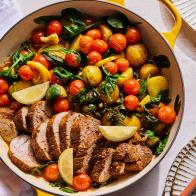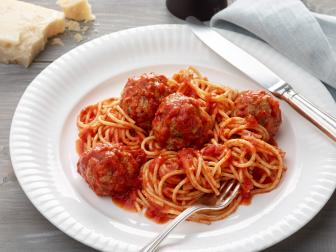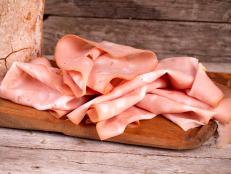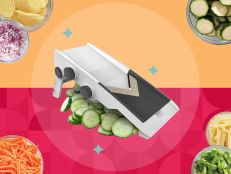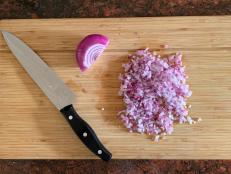How to Make Perfect Meatballs
Here, we share all our tips and tricks for tender, juicy meatballs that hold their shape.
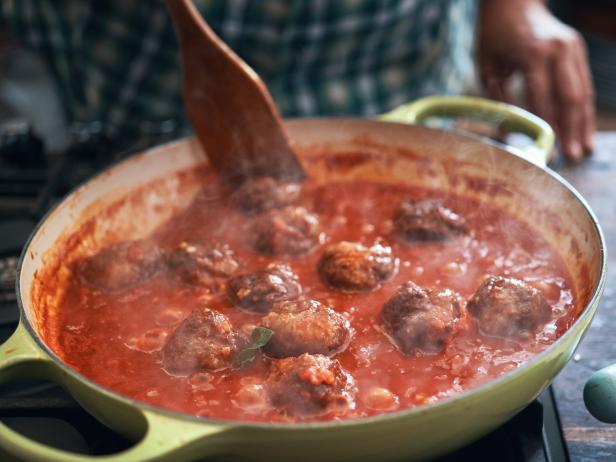
GMVozd/Getty Images
By Layla Khoury-Hanold for Food Network Kitchen
Layla Khoury-Hanold is a contributor at Food Network.
Meatballs take top billing in a number of classic dishes, such as spaghetti and meatballs, meatball subs and meatball soups, yet they’re versatile enough to riff on for weeknight dinners and special occasions too. Different culinary cultures have versions of meatballs, from pork-and-beef Swedish meatballs to Japanese tsukune (yakitori-style chicken meatballs) to grilled, spiced Middle Eastern meatballs. In this article, we focus on Italian-American meatballs, which rely on a mixture of ground meat, breadcrumbs and milk for moisture, eggs for binding and sometimes Parmesan and herbs for added flavor. Once you master the basic recipe, you can experiment with different types and ratios of ground meat and seasonings and sauces or with plant-based meats and meat substitutes. Here are our tips and tricks to make tender, flavorful meatballs, as well as our favorite recipes. And if you’re looking to serve up the meatballs with a classic plate of spaghetti, check out our story How to Make Perfect Spaghetti too.

2012, Television Food NEtwork, G.P. All Rights Reserved
Meatball Tips and Tricks
- The fat ratio matters: a variety of ground proteins can be used for making meatballs, including beef, pork, veal, lamb, chicken and turkey. Opting for a higher fat ratio, such as ground chuck (80% lean/20% fat), helps meatballs hold their shape.
- Use fresh and dried breadcrumbs: breadcrumbs or bread rehydrated in milk helps keep meatballs moist; you can use store-bought, homemade or Panko breadcrumbs, or even crushed crackers or pita chips. For supremely tender meatballs, try a recipe that calls for both fresh and dried breadcrumbs, as in Ina Garten’s Real Meatballs and Spaghetti (pictured above).
- Don’t forget salt: like any dish, meatballs need to be seasoned. About 1 teaspoon of Kosher salt per pound of meat is a good rule of thumb, though if you’re using Parmesan in the mix, dial it back to account for the cheese’s salt content.
- Use a light touch: use your hands to mix the ingredients but use a light touch. Overworking the ingredients while mixing or rolling the meat mixture too tightly when forming the meatballs will result in tough meatballs.
- Oil your hands: lightly oil your hands prior to rolling to prevent the meatball mixture from sticking.
- Chill your meatballs: refrigerating your meatballs an hour before cooking helps them hold their shape throughout the cooking process. They can chill in the fridge for up to 24 hours before cooking, making meatballs a great make-ahead dish, too.
- Go beyond the noodle: sure, spaghetti and meatballs are a classic for a reason, but meatballs take a starring turn in recipes such as Greek Meatball Salad or Chipotle Meatball Burritos.
- Make ‘em mini: mini meatballs are great for kids and make for an easy appetizer, light supper or entertaining snack. Try these Italian Cocktail Meatballs with Herbs and Ricotta, Mini Meatball Sliders or Mini Meatball Crostini.
How to Cook Meatballs: Simmering Versus Baking
Simmering: You don’t have to brown meatballs before adding them to a sauce, particularly if you’re cooking them in a slow cooker like these Slow-Cooker Italian Meatballs. But browning the meatballs on the stovetop first creates a crust that creates a more complex flavor and helps the meatballs hold their shape as they simmer. It’s an extra step that adds hands-on cook time, but it pays off in flavor dividends. Simmering meatballs in sauce also helps keeps them tender while they cook, while imbuing the sauce with additional flavor.
Baking: Roasting meatballs in the oven on parchment-lined sheet trays eliminates the splatters and mess of stovetop browning and makes clean-up a cinch. Plus, the hands-off approach means you don’t have to stand over the stove to frequently turn them. Baking meatballs can also be a boon if you’re trying to cook with less oil. Baking meatballs is also more efficient if you’re cooking for a crowd or batch cooking for meal prep. The only con? They’re usually less tender than simmered meatballs.

Renee Comet
How to Make Meatballs
Master the technique in this basic Italian American Meatballs recipe and you’ll be able to confidently experiment with different combinations of ground meat, breadcrumbs and seasonings. The key to moist, tender meatballs that hold their shape lies in first making a panade, in which bread or breadcrumbs (or sometimes Panko or crushed crackers) are rehydrated in milk to form a paste.
1: Prep the Breadcrumbs
Grate the bread or pulse into crumbs in a food processor. In a small bowl toss the breadcrumbs with milk to re-hydrate.
2: Combine the Ingredients
In a large bowl, combine the breadcrumbs, pork, veal, beef, Parmesan, parsley, salt, onion, garlic and egg and mix until combined. Season the meat mixture with pepper.
3: Shape the Meatballs
Using your hands, gently form the meat mixture into 18 slightly larger than golf ball-sized balls. (Packing the meat mixture too tightly together will result in tough meatballs). Refrigerate for at least 1 hour or up to 24 hours.
4: Brown the Meatballs
Heat oil in a large nonstick skillet over medium-high heat. Add half of the meatballs and cook, turning occasionally, until well browned on all sides, about 6 minutes. Transfer the meatballs to a plate. Drain the oil and wipe out the skillet, return to the heat, and repeat with additional oil and meatballs.
5: Simmer the Meatballs
Drain and wipe out the skillet again. Return all the meatballs to the skillet and pour in the sauce. Bring to a boil, lower the heat, and simmer, covered, swirling the pan occasionally, until the meatballs are cooked through about 15 minutes.
Recipes for Meatballs
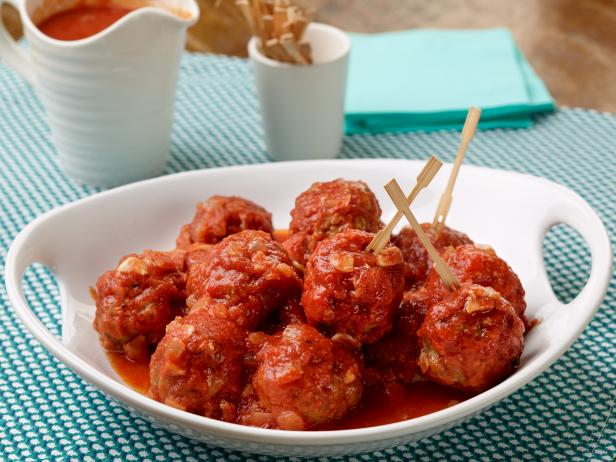
Renee Comet, 2013, Television Food Network, G.P. All Rights Reserved
For this fan-favorite recipe, chef Anne Burrell pulls in a trio of ground meat—beef, veal and pork—plus grated Parmesan to create tender, flavorful meatballs. The meatballs are first browned on the stovetop, then finished in the oven. From here, the meatballs can be added to marinara sauce or frozen for later use.

2012, Television Food NEtwork, G.P. All Rights Reserved
To ensure tender, moist meatballs, Ina Garten relies on a mixture of fresh white breadcrumbs and dried seasoned breadcrumbs. She browns the meatballs on all sides to create a crust and lock in flavor, then finishes cooking them by simmering them in a red-wine-spiked tomato sauce.

This easy all-beef meatball recipe offers a hands-off cooking approach. It’s worth making a double batch; all these meatballs require is a 12 to 15-minute trip to the oven and they’re ready to be eaten right away, or cooled and frozen for future use. Try adding them to simmered sauces, piling them onto sub sandwiches or adding them to grain bowls.
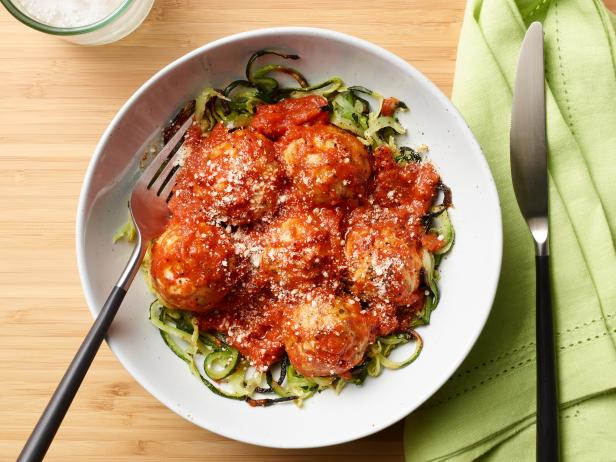
Renee Comet
Skip the sear-and-simmer method and let your air fryer do all the work. Adding ricotta to the mixture of ground turkey, milk and breadcrumbs keeps these meatballs extra moist, while a handful of seasonings and Parmesan add savory depth. In just 10 minutes, these meatballs cook up fork-tender and golden-brown. Be sure to leave space between the meatballs to ensure even air circulation and consistent browning.
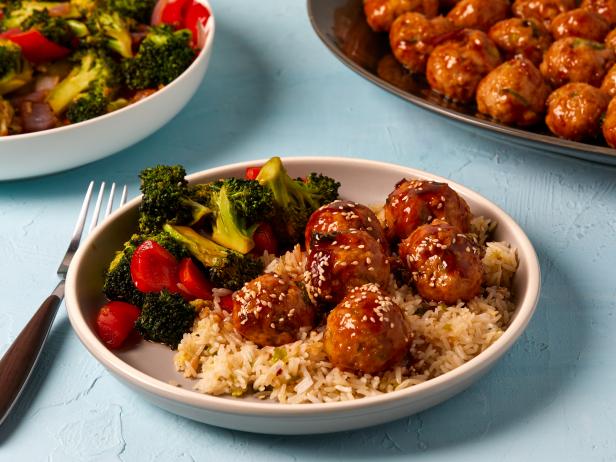
Lucy Schaeffer
Ground chicken meatballs offer a lighter take on the traditional beef or beef-pork-veal variety. Here, they’re baked in the oven, then tossed in a teriyaki-inspired glaze. Pair them with garlic fried rice and stir-fried vegetables, and you’ve got a winner, winner, chicken meatball dinner.
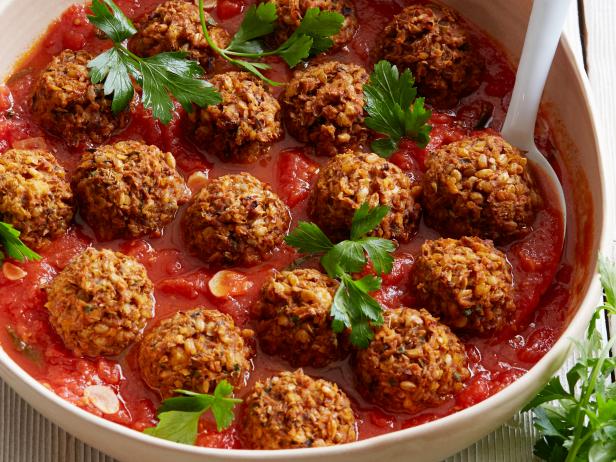
Matt Armendariz, 2014, Television Food Network, G.P. All Rights Reserved
These flavorful vegan meatballs are chockful of umami-rich ingredients, including shiitake mushrooms, nutritional yeast, soy sauce and tomato paste. Lentils and wheat berries anchor the recipe, offering heft and a double dose of protein and fiber.
Related Links:




